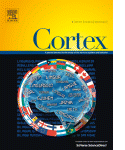Syntax in a pianist’s hand. ERP evidence for an “embodied” musical syntax
Syntactic operations in language and music are well established and known to be linked in cognitive and neuroanatomical terms. What remains a matter of debate is whether the notion of syntax also applies to human actions and how those may be linked to syntax in language and music. The present electroencephalography (EEG) study explored syntactic processes during the observation, motor programming, and execution of musical actions. Therefore, expert pianists watched and imitated silent videos of a hand playing 5-chord sequences in which the last chord was syntactically congruent or incongruent with the preceding harmonic context. 2-chord sequences that diluted the syntactic predictability of the last chord (by reducing the harmonic context) served as a control condition. We assumed that behavioural and event-related potential (ERP) effects (i.e., differences between congruent and incongruent trials) that were significantly stronger in the 5-chord compared to the 2-chord sequences are related to syntactic processing. According to this criterion, the present results show an influence of syntactic context on ERPs related to (i) action observation and (ii) the motor programming for action imitation, as well as (iii) participants’ execution times and accuracy. In particular, the occurrence of electrophysiological indices of action inhibition and reprogramming when an incongruent chord had to be imitated implies that the pianist’s motor system anticipated (and revoked) the congruent chord during action observation. Notably, this well-known anticipatory potential of the motor system seems to be strongly based upon the observer’s music-syntactic knowledge, thus suggesting the “embodied” processing of musical syntax. The combined behavioural and electrophysiological data show that the notion of musical syntax not only applies to the auditory modality but transfers – in trained musicians – to a “grammar of musical action”.
Download articolo completo:



